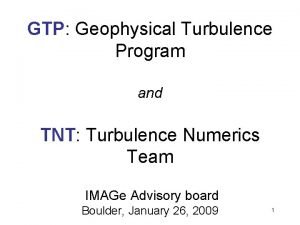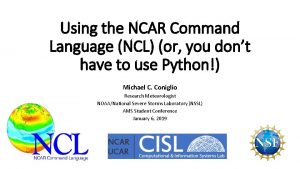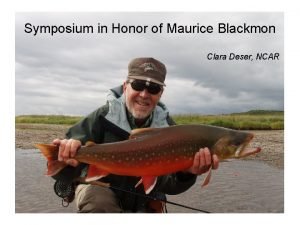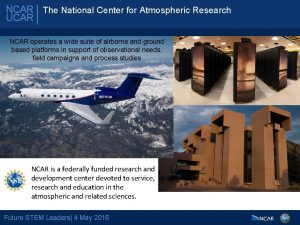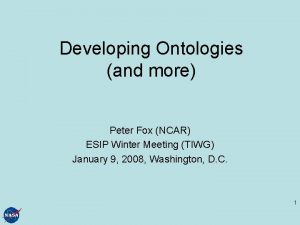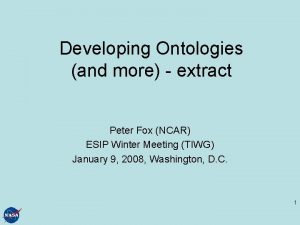Developing Service Ontologies Peter Fox NCAR ESIP Winter






- Slides: 6

Developing Service Ontologies Peter Fox (NCAR) ESIP Winter Meeting (TIWG) January 9, 2008, Washington, D. C. 1

Services • Ontologies of services, provides: – What does the service provide for prospective clients? The answer to this question is given in the "profile, " which is used to advertise the service. To capture this perspective, each instance of the class Service presents a Service. Profile. – How is it used? The answer to this question is given in the "process model. " This perspective is captured by the Service. Model class. Instances of the class Service use the property described. By to refer to the service's Service. Model. – How does one interact with it? The answer to this question is given in the "grounding. " A grounding provides the needed details about transport protocols. Instances of the class Service have a supports property referring to a Service. Grounding. 2

Developing a service ontology • Use case: find and display in the same projection, sea surface temperature and land surface temperature from a global climate model. • Find and display in the same projection, sea surface temperature and land surface temperature from a global climate model. • Classes/ concepts: – – – – Temperature Surface (sea/ land) Model Climate Global Projection Display … 3

Service ontology • • • • Climate model is a model Model has domain Climate Model has component representation Land surface is-a component representation Ocean is-a component representation Sea surface is part of ocean Model has spatial representation (and temporal) Spatial representation has dimensions Latitude-longitude is a horizontal spatial representation Displaced pole is a horizontal spatial representation Ocean model has displaced pole representation Land surface model has latitude-longitude representation Lambert conformal is a geographic spatial representation Reprojection is a transform between spatial representation …. 4

Service ontology • A sea surface model has grid representation displaced pole and land surface model has grid representation latitudelongitude and both must be transformed to Lambert conformal for display 5

More information • OWL-S - http: //www. w 3. org/Submission/OWL-S • SWSO/F/L - Semantic Web Services Ontology/Framework/Language http: //www. w 3. org/Submission/SWSF/ • WSMO/X/L - Web Services Modeling Ontology/Exection/Language http: //www. w 3. org/Submission/WSMX/ www. wsmo. org, www. wsmx. org • SAWSDL - (WSDL-S) 6

